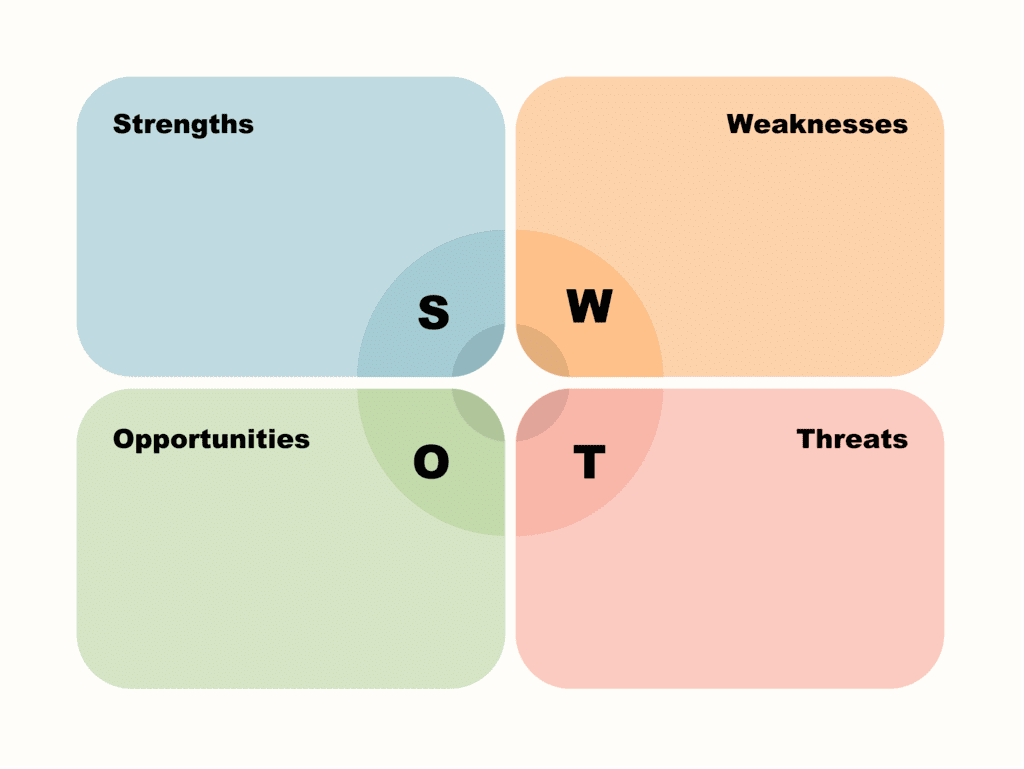Idea Generation | CMAT Mock Test Series - CAT PDF Download
| Table of contents |

|
| What is Idea Generation? |

|
| Role of Idea Generation in Innovation and Problem-Solving |

|
| Techniques of Idea Generation |

|
| SWOT Analysis |

|
| SCAMPER Technique |

|
| Tips for Effective Idea Generation |

|
What is Idea Generation?
This is the first and most important step in product development. It involves collecting ideas from various sources. These sources include individuals, groups or communities willing to provide their ideas. Ideas are generated using various techniques.

Role of Idea Generation in Innovation and Problem-Solving
Idea generation is pivotal in innovation and problem-solving, the initial spark driving progress. Take Apple Inc. as an example. Their relentless commitment to idea generation has led to groundbreaking innovations like the iPhone. Apple has revolutionized communication, work, and entertainment by continuously generating and refining ideas. In problem-solving, idea generation helps identify novel solutions.

When Apple faced declining sales in the early 2000s, Steve Jobs’ idea to create sleek, user-friendly products and innovative marketing revitalized the company. Thus, idea generation fuels innovation by spawning fresh concepts and problem-solving by offering creative approaches to challenges, leading to remarkable advancements and successful business strategies.
Techniques of Idea Generation
Techniques of idea generation include Brainstorming, Mind Mapping, SWOT Analysis and SCAMPER Technique.
Brainstorming
Brainstorming is a collaborative and creative technique to create a wide range of ideas for a specific problem or task. It typically involves a group of individuals but can also be done individually. The key principles of brainstorming are:
- Quantity Over Quality: The goal is to initially produce as many ideas as possible without judgment or criticism. The more ideas, the better.
- Free Expression: Participants should feel free to express any idea, no matter how unconventional or seemingly impractical it may be.
- Build on Others’ Ideas: Encourage participants to expand on or combine ideas put forth by others, fostering a collaborative atmosphere.
- Example: In a brainstorming session for a new restaurant concept, team members might suggest ideas like a themed menu based on classic movies, an interactive dining experience, or a sustainable farm-to-table approach.
Mind Mapping
Visual brainstorming techniques like mind mapping help organize ideas in a structured and interconnected manner. It starts with a central idea or concept and branches into related subtopics or ideas. Key elements of mind mapping include:
- Central Idea: Begin with a central topic or concept and write it down at the centre of a page.
- Branching: Create branches extending from the central idea, each representing a subtopic or related concept.
- Hierarchy: Subtopics can have further sub-branches, creating a hierarchical structure that captures the relationships between ideas.
- Keywords and Visuals: Use keywords and visual elements like icons or colours to enhance understanding and memory.
- Example: When planning a marketing strategy, you can create a mind map with the central idea “Marketing Plan” branching into subtopics like “Target Audience,” “Advertising Channels,” “Budget Allocation,” and “Key Performance Indicators (KPIs).”
SWOT Analysis
SWOT Analysis is a strategic planning tool to assess a business or project’s internal strengths and weaknesses and external opportunities and threats in the market or environment. It involves the following components:

- Strengths: Identify the internal attributes and resources that provide a competitive advantage. These could be skilled employees, cutting-edge technology, or strong brand recognition.
- Weaknesses: Recognize the internal limitations or areas where improvement is needed, such as lack of funds, outdated infrastructure, or poor management.
- Opportunities: Examine external factors that benefit the organization, like emerging markets, changing consumer preferences, or new technologies.
- Threats: Identify external factors that could harm the organization, such as increased competition, economic downturns, or regulatory changes.
- Example: In a SWOT Analysis for a small retail business, strengths might include a loyal customer base, while weaknesses could involve limited financial resources. Opportunities could include expanding into e-commerce, while threats might include a downturn in the local economy.
SCAMPER Technique
The SCAMPER technique is a creative thinking tool offering seven ways to manipulate existing ideas, products, or processes to generate new and innovative solutions. Each letter in SCAMPER represents a specific action:

- Substitute: Identify elements that can be substituted with something else. For example, replacing traditional fuel in vehicles with electric power.
- Combine: Merge different concepts, features, or ideas to create something new. An example is combining a smartphone with a fitness tracker to create a health-monitoring device.
- Adapt: Modify an existing idea or concept to suit a new context or purpose. Adapting a restaurant’s menu to cater to vegan or gluten-free diets is an adaptation.
- Modify: Alter specific attributes or characteristics of an idea, such as changing the size, shape, or colour. An example is modifying a backpack’s design to include solar panels for charging devices.
- Put to Another Use: Find alternative uses for an existing product or concept. Repurposing shipping containers into housing units is putting them to another use.
- Eliminate: Identify elements, features, or steps that can be removed without compromising the overall concept or function. Eliminating physical buttons on a smartphone in favour of touchscreen technology is an elimination.
- Reverse (or Rearrange): Change the order or sequence of elements in a concept. Reversing the order of a recipe’s steps can lead to a new dish.
- Example: Applying the SCAMPER technique to the concept of a traditional bicycle, you might “Combine” it with an electric motor to create an electric bicycle or “Reverse” the handlebars and pedals to create a recumbent bicycle.
Tips for Effective Idea Generation
- Creating a Conducive Environment: To enhance idea generation, provide an atmosphere encouraging creativity. Offer a comfortable physical space, free from distractions, where individuals can focus on brainstorming. For example, companies like Google create innovation hubs with playful décor and relaxation areas, like the Googleplex, to foster creativity and inspiration.
- Encouraging Diversity of Thought: Embrace diverse perspectives and backgrounds within your team. Different viewpoints bring a variety of ideas to the table. For instance, Pixar Animation Studios credits its success to its diverse team of storytellers, artists, and technologists, each contributing unique ideas that lead to groundbreaking animated films.
- Overcoming Creative Blocks: Teach techniques to overcome mental barriers. Tools like meditation, brainstorming exercises, or time management strategies can help. An example is author J.K. Rowling, who overcame writer’s block while creating the Harry Potter series by changing her writing environment and routine, allowing her ideas to flow more freely.
Conclusion
Idea generation is the lifeblood of innovation, problem-solving, and creativity in all aspects of life and industry. It’s a dynamic process that thrives on diversity of thought, conducive environments, and the ability to overcome creative blocks. Individuals and organizations can tap into their creative potential with the right techniques and mindset. It continuously produces fresh, valuable ideas that drive progress and transformation. In an ever-evolving world, the power of idea generation remains a vital force for shaping the future.
|
19 videos|59 docs|26 tests
|
FAQs on Idea Generation - CMAT Mock Test Series - CAT
| 1. What is Idea Generation? |  |
| 2. What is the role of Idea Generation in innovation and problem-solving? |  |
| 3. What are some techniques of Idea Generation? |  |
| 4. How does SWOT Analysis help in Idea Generation? |  |
| 5. What are some tips for effective Idea Generation? |  |





















